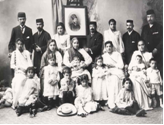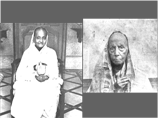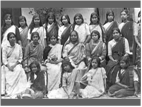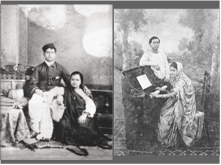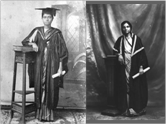By Geraldine Forbes
As contemporary authors have noted, family collections are notorious for their omission of pain, ill health, discord, and rupture. (Hirsch quotes Jo Spence on family collections: “There is no record of my appalling health. . . ; no record of the pointless years shunted around schools inside formal education … ; no record of a broken marriage and the havoc this so-called failure caused me; no record of hard work done for countless employers; no record of me trying to please parents and other authority figures; no record of struggles. .. . Moreover, those “happy,” “serious,” “loving,” “miserable,” but always passive visual moments which do exist … give no indication at all of the wider social, economic, and political histories of our disgusting class-divided society,” Hirsch, p. 134, Jo Spence, “Visual Anthropology,” in co-edited Family Snaps, pp. 82-83.) As working documents, these photos give the family cohesion, perpetuate myths about their solidarity and happiness.
* Geraldine Forbes is Distinguished Teaching Professor, Dept. of History, State University of New York, Oswego. She presented this in a Lecture Series organized by Centre for Manipur Studies (CMS), Manipur University (MU), and transcribed by Aheibam Koireng, Faculty, CMS, MU.
[ecwid widgets=”productbrowser search minicart” categories_per_row=”3″ grid=”10,3″ list=”60″ table=”60″ default_category_id=”21294227″ category_view=”table” search_view=”list” minicart_layout=”MiniAttachToProductBrowser”]


